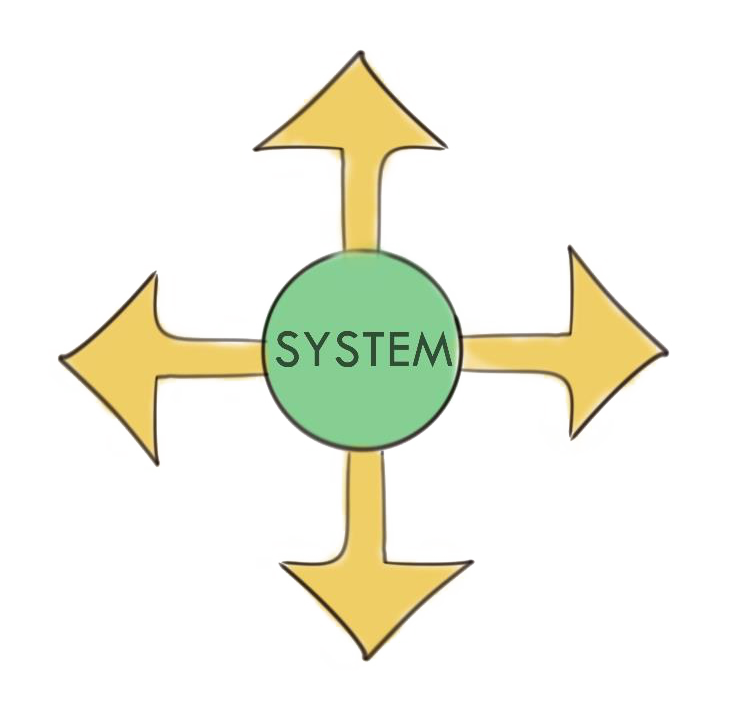2. System boundaries
Description of a sociotechnical system associated with the given problem and identification of system boundaries in different dimensions. Who wants to know, for what purpose, over how long? Since the system boundaries outline the project’s sphere of influence, the selected boundaries will ultimately decide the available space for solutions for system change.
At a glance
Goal
Description of various boundaries of a sociotechnical system associated with the formulated problem.
Input
Problem orientation
Methods
Process-based description of a system; life cycle approach
Relative workload
Lower
Output
A clearly defined sociotechnical system that will serve as the point of departure for the study.
Steps
1. Describe a sociotechnical system related to a given problem. Employ a life-cycle approach and create a process-based description.
2. Identify internal parts of this system and analyse the interrelations among the parts/subsystems.
3. Describe the external environment.
Dimensions
Consider the possibility/viability/meaningfulness of looking beyond a single sector. For example, when the heating sector is the main focus, building construction, electricity and hot water supply could also be considered.
Dimensions to consider (suggestion):
- Spatial boundaries (geographical and administrative boundaries)
- Temporal (time horizon for problem solving)
- Sectorial
- Social components (actors)
- Technical components
Consider questions such as:
- Is there any difference between the geographical and administrative boundaries? If so, in what sense?
- What are the relationships between actors, technologies and rules in the sociotechnical system?
- What could different system boundaries mean?
Data collection
When identifying the system boundaries, employ a life-cycle approach and set out to create a process-based description of the system. Thus, the data must be obtained from sources specific for the technology/technologies and social context in question. If the problem has been addressed previously, there could be relevant reports from local/regional/national governments, consultants and/or other organisations.
When considering the geographical and administrative boundaries, it can also be helpful to look for official reports/statements/descriptions of e.g. the geographical region and/or sector. Depending on the sociotechnical system under study, there could be rather well-defined definitions – but keep in mind that it is also important to question such boundaries as they may delimit/constrain the scope of the study.
For more information about data collection, see participation and context.
Participatory elements
The participatory process and discussion of system boundaries can help challenge conventional thinking of what constitutes the relevant dimensions to consider. Stakeholders could be consulted to help shed light on the practical interpretations and implications of different system boundaries and can help describe the practicalities.
Stakeholders’ experiences of the day-to-day operation and functioning of the sociotechnical system can help shed light on practical interpretations of different elements of the system boundaries as well as possible implications from different system boundary constitutions.
For more information about participatory elements, see participation and context.
Examples
KTH Campus
- Time frame: 2050
- One single (1) desirable future vision
- Scale: KTH Campus Valhallavägen
- The main parts of the campus as a sociotechnical system – actors and material components
Keep in mind
- The system boundaries could be adjusted later on if necessary, but it is often preferable to have at least an initial idea of how to define and delimit the system as it helps direct and focus the study. It will also influence the outcome of the upcoming modules.
- Consider the sphere of influence of present and future stakeholders when deciding on the system boundaries.
- There is often a tendency to stick with “conventional” system boundaries, such as considering the urban scale for heating solutions. Try to broaden and rethink the boundaries to avoid a narrow focus on a single sector, which would limit what solutions are possible.
